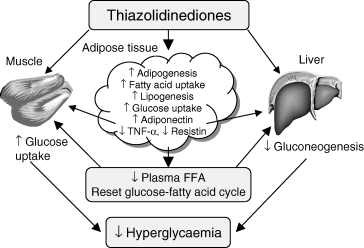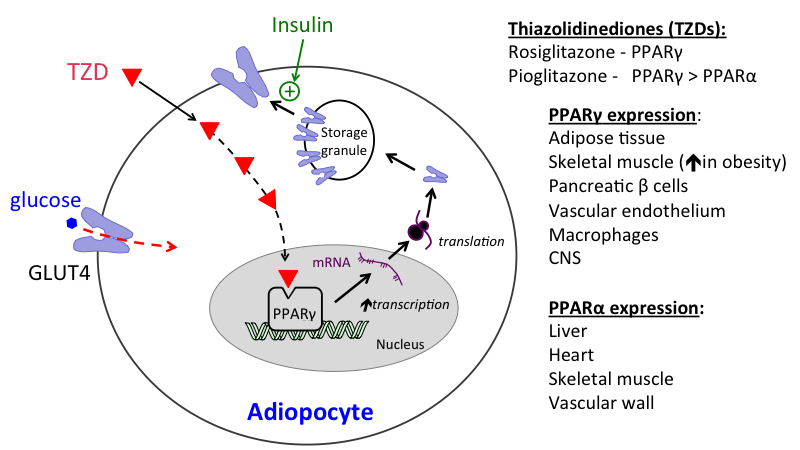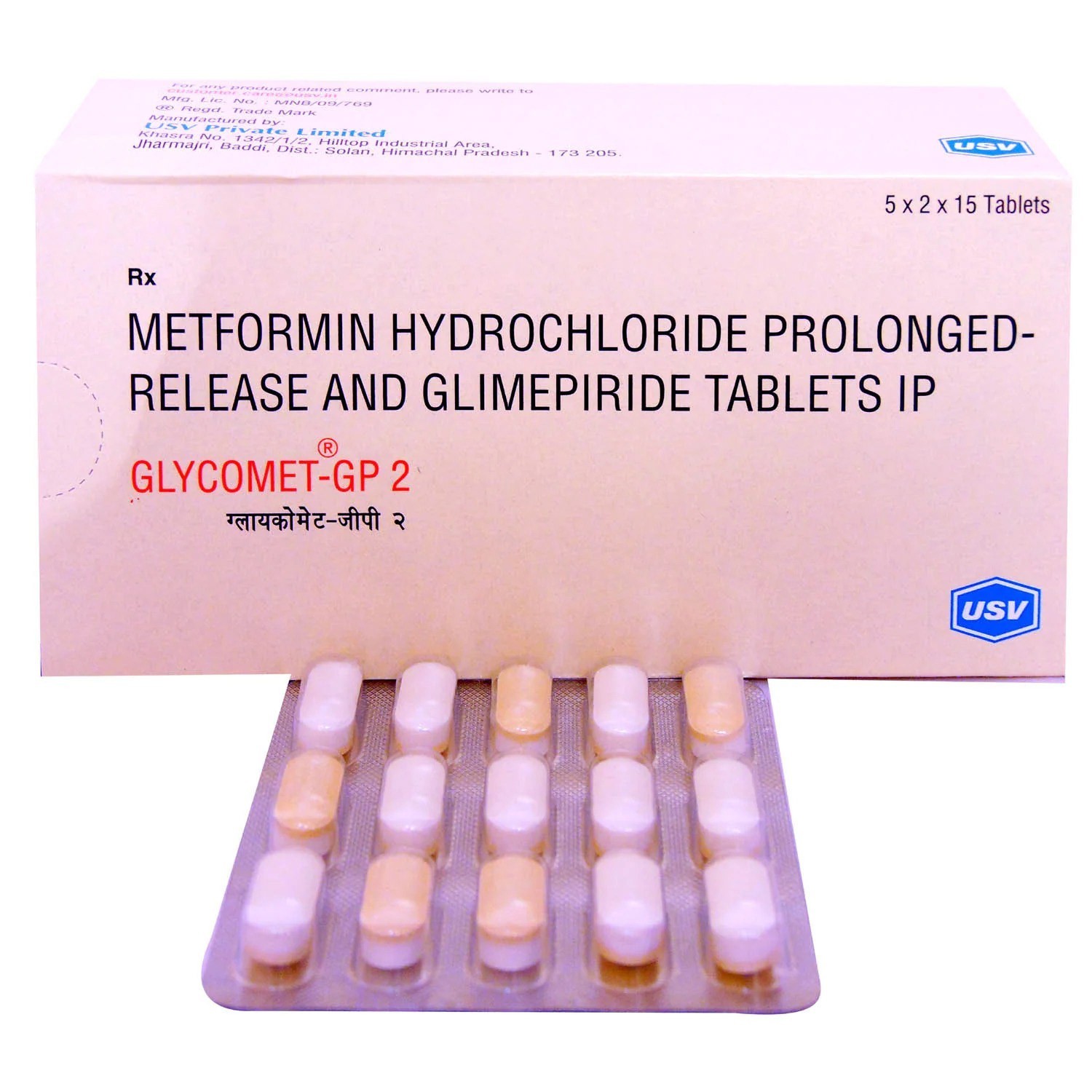Last updated on July 28th, 2023
Type 2 diabetes is quite common nowadays and is quickly growing in numbers. Every 15 seconds, a person gets diagnosed with it. Nearly 10% (30 million) of the population is suffering from diabetes. The treatment of type 2 diabetes is using a mix of diet, physical activity, and antidiabetic medications. These medications can be administered by the oral or injectable route. Common medicines for improving blood glucose in type 2 diabetics are thiazolidinediones (glitazones).
People can use these thiazolidinediones (TZD) as monotherapy or can combine them with another oral type 2 diabetic agents like sulphonylureas or Metformin. This article explains its uses, side effects, precautionary measures, and other significant data regarding TZDs.

What are Thiazolidinediones?
Thiazolidinediones (in other words, glitazones) belong to a category of oral hyperglycaemic drugs. These drugs treat type 2 diabetes and lower blood sugar levels.
The binding of thiazolidinediones occurs to a receptor named peroxisome proliferator-activated receptor-gamma. This receptor is present in the adipocytes (fat cells). It helps to support the maturation of fat cells and results in fat deposition in the peripheral tissues. By lowering the circulating fat content, TZDs help to improve the insulin sensitivity of a type 2 diabetes patient.
Also Read: Lowering Blood Sugar Level Naturally?
Thiazolidinediones Examples
Pioglitazone (brand name, Actos) is one of the thiazolidinedione drugs. It is available in the form of a tablet. The medication helps to improve insulin sensitivity and protects the insulin-producing cells present in the pancreas.
Together with the single-component product, the component in Actos, Pioglitazone, also comes as a combination medication. That is, combined with other anti-diabetes medicines.
Two other TZDs were banned from the market and are no longer available. these are:
- Rezulin (troglitazone)
- Avandia (rosiglitazone) and its combinations, Avandamet (rosiglitazone/metformin) and Avandaryl (rosiglitazone/glimepiride).
Also Read : Top Homeopathic Medicines to Cure Diabetes

Thiazolidinediones Mechanism of Action
TZD drugs are oral diabetes medications that people use with a proper diabetic diet and exercise. The medications help to regulate high blood glucose in type 2 diabetics.
Type 2 diabetes is a chronic endocrine problem. In this, the body fails to make use of the insulin hormone in a normal way. And, hence fails to regulate the quantity of glucose circulating in the bloodstream. Hence, proper glucose control is essential. Blood sugar control helps to prevent complications like:
- Nerve problems
- Kidney damage
- Blindness
- Sexual function issues
- Loss of limbs
Moreover, it helps to lower the risk of heart attack or stroke. TZDs work as “insulin sensitizers” as they adhere to the insulin receptors present in the cells. And, this augments the cell’s sensitivity to insulin and hence aids in the removal of sugar from the body.
Furthermore, they augment the levels of incretins. These are natural compounds that aid to regulate blood glucose by augmenting insulin release, chiefly after a meal.
Summary
Glitazones work as insulin-sensitizing agents. They stick to the insulin receptors (peroxisome proliferator-activated receptor-gamma). These receptors are present on the fat cells present all over the body. This helps to increase the cell’s response to insulin, causing the elimination of sugar from the body.
Also Read: Control Your Blood Sugar Level by Doing Simple Yoga For Diabetes
What is Insulin Resistance?
As per the ADA, individuals with insulin resistance require a high amount of insulin to process sugars in the body. Gradually, the pancreas fails to maintain insulin production. This leads to an increase in normal blood glucose levels. This may cause prediabetes or type 2 diabetes.
Many individuals suffering from metabolic syndrome experience insulin resistance. Metabolic syndrome is a set of risk factors responsible for cardiovascular disorders. Metabolic syndrome augments the risk of developing cardiac problems, diabetes, and stroke. The risk factors of metabolic syndrome can be:
- High triglyceride levels: more than 150 mg/dL
- High blood pressure: more than 130/80 mmHg
- Fasting sugar levels: more than 100 mg/dL
- Abdominal obesity: more than 35 inches in females and more than 40 inches in males
- Low levels of HDL cholesterol: less than 50 mg/dL in females and less than 40 mg/dL in males.
If an individual experiences any three or more of the above risk factors, it indicates metabolic syndrome.
Summary
TZD drugs exert their action by targeting the PPAR-gamma receptors. They are important to regulate how a person’s body metabolizes sugar and how it stores fat. Thus, TZD helps to improve insulin sensitivity and maintain the working of insulin-producing cells.
Thiazolidinediones Side Effects
As TZD drugs target a vital receptor that promotes a range of genes, there have been variable side effects between various medications that belong to this class. Side effects of glitazones can be:
- Weight gain
- Water retention
- Hypersensitive skin reactions
- Decrease in the sense of touch
- Chest pain and infections
- Vision troubles
Less common, however more risky side effects can be:
- Anaemia
- Macular oedema
- Liver failure
- Heart diseases
- Bone fractures
Also Read: Glycomet gp2 Uses
Who Can Take Thiazolidinediones?
Prior to taking TZDs, it is important to discuss with a doctor regarding medical history, and medicines a person is taking like OTC drugs, prescription medicines, vitamins, or supplements. The only healthcare provider can determine whether TZDs are a suitable treatment for a person.
Males
Males having type 2 diabetes, who require aid with blood glucose control, can consume TZDs as long as they are not a part of any restricted classes.
Females
Type 2 diabetic females, who are not pregnant or lactating, and who require aid with glucose control can consume TZDs as long as they are not a part of any restricted classes. A pregnant female or a lactating mother must contact a doctor first for medical help. There is a shortage of data on TZDs in pregnant females to identify the risk of fetal harm or miscarriage. Poor diabetes control during pregnancy can damage both the mother and the unborn baby.
Moreover, it is seen that Actos may induce ovulation, hence there is a likelihood of unintentional pregnancy. Contact a doctor about the necessity for efficacious birth control. Also, there is a lack of data on Actos and breastfeeding. Thus, consultation with a doctor is a must before giving a TZD to a lactating female.
Also Read: Reverse your Prediabetes
Children
Children must avoid a TZD. There is no data on the safety and efficacy of TZDs in kids till now. In addition, Actos is not safe for children owing to the side effects noticed in adults. These are bone fractures, fluid retention, bladder tumors, and heart failure.
Seniors
In studies, older adults and young patients experienced similarly thiazolidinedione treatment as far as safety and effectiveness are concerned. Yet, sample sizes were also small. Contact a doctor for any medical help about the use of thiazolidinediones in older adults.
Also Read: Do Antibiotics Raises Blood Sugar Level?
Benefits of Thiazolidinediones Drugs
Glitazone benefits can include a reduction in the blood sugars and maintenance of the pancreas’s capability to form enough insulin. Also, the Thiazolidinediones drugs aid in reducing blood pressure and improving lipid metabolism. They do so by augmenting the levels of HDL cholesterol and lowering the levels of triglycerides.
Precautions and Warnings
Actos is not safe for individuals who are/have:
- Hypersensitive to Pioglitazone or any other component in the medication
- Children
- Type 1 diabetes mellitus
- An established NYHA Class III or IV heart failure
- Edema
- Active bladder cancer
- Liver failure
- Symptomatic congestive heart failure
- Diabetic ketoacidosis
Actos comes with a boxed (black box) caution. And, this is one of the strongest warnings by the FDA. The warning states:
- TZD therapy may lead to or deteriorate congestive heart failure (CHF) in a few patients.
- After beginning treatment with Actos, diabetic people must be monitored closely for signs of heart failure. These symptoms can be breathing issues, rapid weight gain, or swelling (edema). If heart failure occurs, treatment should be started and people must discontinue taking Actos.
- It is not safe to give Actos to patients experiencing symptomatic heart failure.
Summary
Actos may lead to a new or deteriorating heart failure. If a person gains weight rapidly, experiences inflammation (in the lower legs), or any other signs of heart failure, consult a doctor immediately or get urgent medical attention. Individuals having serious heart failure or symptomatic heart failure must not consume Actos.
Also Read: Can Diabetics Eat Jaggery?
Controversy
The safety status of TZDs took a huge hit in 2010 after rosiglitazone, a common prescription TZD medication was related to a higher risk of heart attack and stroke.
Also, it was concluded by research that heart failure was an ill effect of the drug and that the benefits of rosiglitazone for people with diabetes no longer compensate for the risks. This led to its ban in several countries, like the UK, in late 2010.
Actos, the 2nd most recommended glitazone, also hit the headings that year after it was associated with cases of bladder cancer. Reports proposed that a lengthy usage of Actos might considerably increase the risk of bladder cancer. However, the data was inadequate for health controllers to permit its exclusion from the market. Yet, people taking Actos must be aware of the signs of bladder cancer.
Also Read: Indian Diet Chart for Diabetic Patient
Important Patient Information
- It is good to follow the doctor’s suggestions for a diabetes management plan involving diet, exercise, regular glucose monitoring, and eye care. It is good to contact a doctor if a person is ill, or having surgery, as medicine needs might change.
- Actos might also trigger liver problems. The symptoms of liver problems can be nausea, vomiting, appetite loss, fatigue, dark urine, abdominal pain, and yellowing of the skin or eyes. If a person experiences any of such signs, it is a must to stop Actos and get instant medical help.
- Actos can also cause an accidental pregnancy as it may promote ovulation. A female must talk to a doctor regarding the use of contraception while having Actos.
- While consuming Actos with insulin or other drugs, the risk of hypoglycemia (low blood glucose) augments. A doctor may guide a person regarding the signs of hypoglycemia (such as drowsiness, shakiness, or hunger) and how to manage them.
- Also, Actos might lead to a higher risk of bladder cancer. If a person notices blood in the urine, new or falling urinary urgency, or pain while urinating, it is good to consult a doctor straight away.
Summary
Thiazolidinediones are suitable for people with type 2 diabetes who have poor control over their sugar levels and experience high HbA1c levels. This medication act primarily by improving the body’s ability to react to insulin. These drugs also classically reduce the A1c levels by 1 to 1.5%. When consumed as a monotherapy, TZDs do not cause low blood sugar levels.
Pioglitazone and Rosiglitazone might lead to or deteriorate heart failure and people with a history of heart failure must not take them. Also, people might retain fluid or gain weight while on thiazolidinediones.
Read More: Madhunashini Vati For Diabetes
FAQs:
Who must not consume thiazolidinediones for their diabetes?
TZDs must not be utilized in kids below 18 years, for diabetic ketoacidosis, and Type 1 diabetes.
Why do TZDs result in water retention?
The fluid retention and quick weight gain due to TZD treatment results are due to high fluid reabsorption and a high vascular absorbency in adipose tissues.
How long does it take for TZDs to act in the body?
TZDs reduce the levels of hemoglobin A1c by as much as 1.0% to 1.5%. Effects can be noticed in some four weeks; however complete reduction takes 6 to 12 weeks. When utilized with other anti-diabetes medications like biguanides or sulfonylureas, thiazolidinedione’s hypoglycemic effects seem to correspond.
Can I take thiazolidinediones with food?
Thiazolidinediones are oral anti-diabetes drugs either taken alone or in combination with biguanides. People take these medications once or twice daily with or without food.
References
- https://www.rxlist.com/antidiabetics_thiazolidinediones/drug-class.htm
- https://www.drugs.com/drug-class/thiazolidinediones.html
- https://www.diabetes.co.uk/diabetes-medication/thiazolidinediones.html
- https://hopkinsdiabetesinfo.org/medications-for-type-2-diabetes-thiazolidinediones/
Last Updated on by Dr. Damanjit Duggal
Disclaimer
This site provides educational content; however, it is not a substitute for professional medical guidance. Readers should consult their healthcare professional for personalised guidance. We work hard to provide accurate and helpful information. Your well-being is important to us, and we value your feedback. To learn more, visit our editorial policy page for details on our content guidelines and the content creation process.

 English
English















